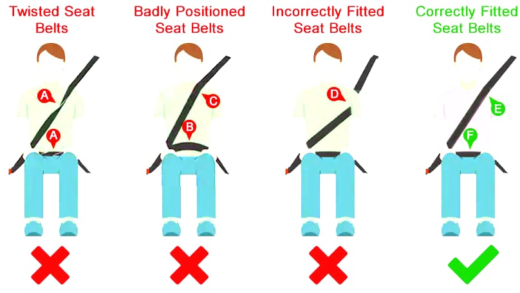The longest flight in the world is operated by Singapore Airlines, covering 9,537 miles from Singapore to New York, taking approximately 18 hours and 40 minutes. Passengers enjoy various amenities like comfortable seating, in-flight entertainment, and quality meals. Comparatively, this flight stands out for its distance and service quality. Interesting facts about long-distance flying include the impact of jet lag and aircraft cruising altitude. Technological advancements have improved aircraft design and in-flight services, making long-haul flights more efficient and enjoyable.
The Longest Flight: What is the longest flight in the world?
The longest flight in the world is currently operated by Singapore Airlines, specifically the flight from Singapore (SIN) to New York (JFK). This route covers a staggering distance of approximately 9,537 miles (15,349 kilometers). This record-breaking flight showcases the capabilities of modern aviation, pushing the limits of distance and endurance in commercial air travel.
Not only does this flight hold the title for the longest in the world, but it also represents a significant achievement in the airline industry, reflecting advancements in aircraft technology and fuel efficiency. As travelers seek more direct routes to save time, airlines are increasingly focusing on long-haul flights.
To summarize, Singapore Airlines operates the longest flight globally, connecting two major cities with an impressive distance that sets a benchmark for future developments in long-distance flying.
Flight Duration: How long does the longest flight take?
The flight duration for the longest flight in the world, Singapore Airlines flight SQ 23, is approximately 18 hours and 40 minutes. This extensive time in the air is a testament to the endurance of both the aircraft and its passengers. The flight typically takes off in the evening and arrives in New York the following morning, allowing for minimal time zone disruption.
Factors such as weather conditions, air traffic, and specific flight paths can affect the actual duration, sometimes leading to slight variations. This means that while the scheduled time is around 18 hours and 40 minutes, passengers may experience a longer or shorter journey depending on these external factors.
In conclusion, understanding the exact duration of the longest flight is crucial for passengers planning their travel, as it highlights the need for preparation and coping strategies to manage the long hours spent in the air.
Airline Operator: Which airline operates the longest flight?
Singapore Airlines is the proud operator of the longest flight in the world. This airline has built a reputation for excellence in service and comfort, making it a popular choice for travelers on long-haul routes. The airline has invested heavily in its fleet, including the Airbus A350-900 ULR (Ultra Long Range) aircraft, specifically designed for such lengthy journeys.
By operating the longest route, Singapore Airlines not only showcases its commitment to providing efficient travel options but also enhances its brand image as a leader in the aviation industry. The airline offers various amenities to ensure passenger comfort during the long flight, from spacious seating to quality in-flight entertainment.
In summary, Singapore Airlines stands out as the operator of the longest flight, emphasizing the importance of quality and service in long-distance travel.
Departure and Arrival: What are the departure and arrival cities for the longest flight?
The longest flight in the world departs from Singapore (SIN) and arrives at New York (JFK). This remarkable journey connects two of the world’s major cities, making it a crucial link for travelers looking for efficient international travel. Singapore Airlines has mastered this route, demonstrating not only its operational capabilities but also its commitment to passenger convenience.
When planning a trip on this route, it’s important for travelers to be aware of the time zones involved. Singapore is ahead of New York, which can affect arrival times. The flight typically departs in the evening, allowing passengers to rest during the flight and arrive in New York the next morning, which is a great way to minimize jet lag.
In summary, this route’s departure from Singapore and arrival in New York exemplifies the advancements in global air travel, catering to the needs of business and leisure travelers alike.
Factors Influencing Duration: What factors contribute to the duration of long flights?
The duration of the longest flight is influenced by several factors that can extend or shorten the time spent in the air. Key elements affecting long flight duration include:
- Weather Conditions: Adverse weather such as storms or high winds can lead to longer flight times as pilots may need to adjust their routes.
- Air Traffic: Busy airspace can cause delays during takeoff and landing, impacting overall flight time.
- Flight Path: The chosen route can vary based on air traffic control instructions or to avoid turbulence, which can affect how long the flight takes.
- Aircraft Performance: The capabilities of the aircraft, including its speed and fuel efficiency, play a significant role in determining flight duration.
Understanding these factors is essential for passengers, as they can prepare better for the journey ahead. For instance, checking weather forecasts or being aware of peak travel times can help manage expectations regarding flight duration.
Coping with Long Flights: How do passengers cope with such long flights?
Passengers on the longest flight often seek strategies to make their experience more comfortable. Here are some effective coping strategies:
- Stay Hydrated: Drinking plenty of water helps combat dehydration caused by the dry cabin air.
- Move Around: Regularly stretching and walking around the cabin can improve circulation and reduce discomfort.
- Comfort Items: Bringing neck pillows, eye masks, and noise-canceling headphones can enhance comfort and help with sleep.
- Entertainment Options: Utilizing the in-flight entertainment system or downloading movies and books can make the time pass more quickly.
- Snacks: Having favorite snacks on hand can make the experience more enjoyable and provide energy boosts.
Implementing these strategies can significantly improve the experience of long-haul flights, allowing passengers to arrive at their destination feeling more refreshed and ready to explore.
Amenities on Long-Haul Flights: What amenities are offered on long-haul flights?
The longest flight in the world offers a range of amenities designed to enhance passenger comfort and enjoyment. Airlines like Singapore Airlines provide various features that cater to the needs of travelers on lengthy journeys. Key amenities typically include:
- Comfortable Seating: Most long-haul flights feature ergonomically designed seats with extra legroom, adjustable headrests, and recline options to help passengers relax.
- In-Flight Entertainment: Passengers can enjoy a selection of movies, TV shows, and games on personal screens, making the time spent in the air more enjoyable.
- Quality Meals: Long flights often include multiple meal services, with options for various dietary preferences, ensuring that passengers are well-fed during their journey.
- Wi-Fi Connectivity: Many airlines now offer in-flight Wi-Fi, allowing passengers to stay connected, browse the internet, or work while flying.
- Personalized Service: Cabin crew are trained to provide exceptional service, ensuring that all passenger needs are met throughout the flight.
These amenities not only improve passenger comfort but also make long-haul flights a more enjoyable experience. Understanding the available comforts can help travelers better prepare for their journey.
Comparing Long Flights: How does the longest flight compare to other long flights in the world?
The longest flight in the world, operated by Singapore Airlines, holds a unique position among long-haul flights. When comparing it to other long flights, several factors come into play:
- Distance: The Singapore to New York route covers approximately 9,537 miles, making it the longest in terms of distance. Other notable long flights include Qatar Airways’ Doha to Auckland route and Emirates’ Dubai to Auckland route, both of which also exceed 8,000 miles.
- Duration: With a flight time of about 18 hours and 40 minutes, it surpasses many other long-haul routes. For instance, the Qatar Airways flight takes around 17 hours and 30 minutes.
- Airline Experience: Singapore Airlines is renowned for its service quality, which often enhances the overall travel experience, setting it apart from competitors.
In summary, the longest flight not only stands out for its distance and duration but also for the level of service provided, making it a benchmark in the aviation industry.
Interesting Facts: What are some interesting facts about long-distance flying?
Long-distance flying is filled with fascinating facts that can surprise even the most seasoned travelers. Here are some interesting tidbits:
- Jet Lag: The body takes about one day to adjust for every time zone crossed, which is why long flights can lead to jet lag.
- Flight Altitude: Long-haul flights typically cruise at altitudes of 30,000 to 40,000 feet, where the air is thinner and allows for better fuel efficiency.
- Aircraft Design: Modern long-haul aircraft are designed with advanced technology, enabling them to fly longer distances without needing to refuel.
- Passenger Preferences: Studies show that passengers prefer window seats on long flights, as they offer a better view and a place to lean during sleep.
- Frequent Flyer Programs: Many airlines offer rewards programs to encourage loyalty among travelers, making long-distance flights more appealing.
These facts highlight the complexities and nuances of long-distance flying, adding an engaging layer to the experience of air travel.
Technology Changes: How has technology changed long-haul flights over the years?
Technology has dramatically transformed long-haul flights, improving efficiency, comfort, and safety. Key advancements include:
- Aircraft Design: Modern aircraft are built with lightweight materials and advanced aerodynamics, allowing them to fly longer distances with less fuel.
- Navigation Systems: Enhanced navigation systems use GPS and satellite technology to optimize flight paths, reducing travel times and improving safety.
- In-Flight Services: Innovations in in-flight entertainment systems provide passengers with on-demand movies, music, and even live TV, significantly enhancing the travel experience.
- Health and Safety: New technologies in air filtration systems improve cabin air quality, reducing the risk of illness during long flights.
- Communication: Passengers can now enjoy Wi-Fi on many long-haul flights, allowing them to stay connected with family, friends, or work.
These advancements illustrate how technology continues to shape the future of long-distance travel, making flying a more efficient and enjoyable experience for passengers.





Comments are closed.